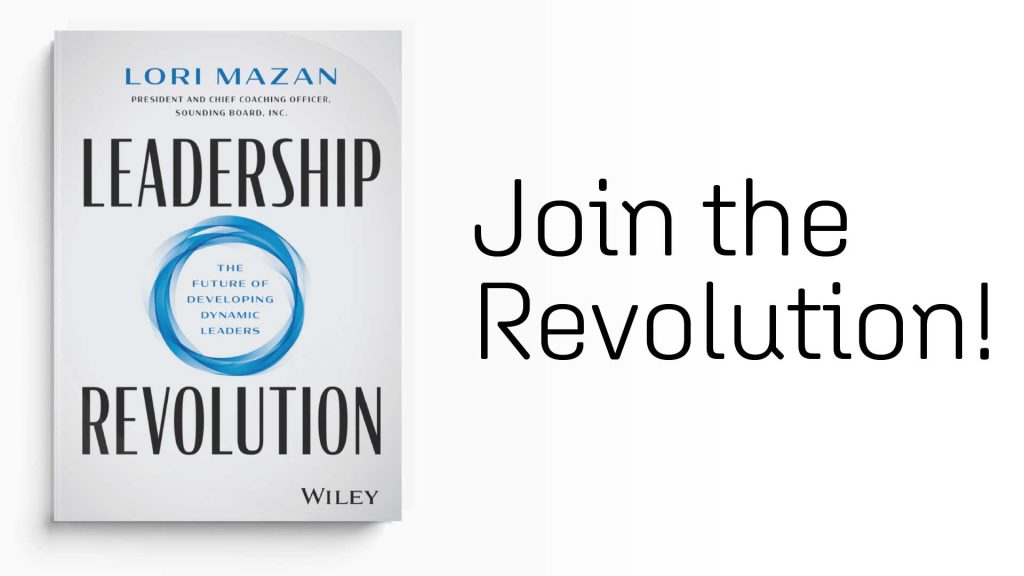This is the fourth installment of a five-part series focused on advancing DEI initiatives through leadership development. You can find parts 1, 2, and 3 on our blog.
It’s an open secret that traditional DEI programs do very little to increase diversity, equity, and inclusion within the workforce. Yet, to ensure the vitality of their businesses, organizations must create diverse and inclusive cultures that extend from the boardroom to the front line. In its Getting to Equal 2020 report, Accenture estimated that global profits would have been higher by 33% — about $3.7 trillion — if inclusion had been a top priority for businesses in 2019.
DEI is a business imperative, but companies can no longer rely on traditional programs to make the headway needed to succeed. Instead, organizations must adopt a holistic approach and measurable solutions that address systemic obstructions to DEI. Leadership development — coaching, sponsorship programs, and mentorships — is one such approach that has proven to be an effective method to foster DEI — especially when it comes to women and other traditionally underrepresented groups.
Leadership development as a catalyst for DEI
Leadership development can help accelerate DEI initiatives by shifting the mindsets and behaviors of current leaders within the organization — those who hold the most responsibility and power to improve diversity, equity, and inclusion. Targeting development to all levels of leadership widens the pool of diverse candidates and challenges traditional leadership paradigms that have historically excluded non-white, non-male perspectives. Further, providing leadership development to high-potential individual contributors builds out key capabilities in the organization’s future leadership bench.
Shift mindsets and behaviors to drive DEI
To set the foundation for DEI, organizations must address the behaviors and mindsets that obstruct the advancement of women and people of color that exist in their current leaders. As Eddie Comeaux stated in a 2022 Forbes article, current leaders act as ‘gatekeepers,’ who “assess merit based on qualities ascribed to dominant group candidates,” resulting in bias that breeds more bias and “inequities in the workplace.”
For example, sponsorship — when senior members of the organization champion lower-level employees — has been shown to increase DEI initiatives. According to Harvard Business Review, women who have senior sponsorship are 19% more likely to advance to the next level of an organization, and Black employees with sponsors are 68%. However, most senior leaders are white men and are more likely to choose protoges who share their identity. MIT Sloan reported that even those who claim to be allies to women of color at work, only 8% of male leaders and 12% of female leaders actually sponsored a woman of color.
Through coaching, leaders build capabilities that confront and challenge biases that influence their behavior, including hiring, developing, and promoting others. Coaches encourage leaders to seek and consider diverse perspectives, increasing their capacity to empathize with identities unlike their own.
Challenge traditional leadership paradigms
Traditional leadership paradigms favor men, emphasizing historically male-gendered qualities such as assertiveness. However, these qualities and capabilities are not exclusive to men and are not the only ones necessary to be an effective leader. Rather, effective leadership can take various forms beyond these paradigms, and requires the ability to be dynamic, applying capabilities within the context of the moment.
“There is no single leadership paradigm,” said Sounding Board Co-founder and Chief Coaching Officer, Lori Mazan. “Organizations must stop relying on the leadership paradigms of the last century.”
In fact, historically female-gendered qualities — like empathy — have been proven to increase leadership performance and impact. Teams with empathetic leaders are more likely to be innovative, engaged, and retained according to research reported by Forbes.
Leadership coaching pushes against patriarchal paradigms by requiring leaders to examine leadership from the context of their own identity. For existing leaders, they learn to recognize their own privileges and how those advantages have skewed their perception of the workplace. For women and people of color, coaching provides a safe space to embrace aspects of their identity that are traditionally undervalued within corporate society and experiment with applying these traits to their leadership style.
Expand the pool of diverse candidates
By providing leadership development to historically underrepresented groups, organizations can expand the pool of candidates for future leadership roles. “If the goal is to have gender parity in the C-suite, then organizations need to open opportunities for leadership at the lower levels of the company,” said Mazan. “You have to start developing those leaders earlier on so that they’re available to be selected from.”
To be clear, women and people of color already possess leadership capabilities; they do not need separate programs designed to assimilate them into masculine, paradigms of leadership. Instead, coaching enhances their existing capabilities while providing opportunities to demonstrate their capacity for leadership.
Expanding coaching to lower levels of the corporate ladder also ensures greater equity in development. Consider, if only 2% of executives are women, when coaching is only provided to the C-suite, then only 2% of coaching is available to women. Yet, if opportunities for coaching are accessible to lower levels — where women represent nearly half of the overall workforce — then development becomes more
Create accountability
Without accountability, any DEI initiative will be ineffective. Leadership coaching can help create accountability when administered through technology that tracks and measures developmental progress. IBM outlines best practices for DEI initiatives and leadership development in its Women, leadership, and missed opportunities report. They include:
- Digital dashboards that provide transparency and intervention
- Continual test-and-learn cycles
- Automated feedback loops
- An individualized, “whole-person” approach to development
Sounding Board helps organizations implement these best practices through its Leadership Development Platform. Companies can easily build, track, measure, and scale leadership development programs through one system. Organizations can utilize Sounding Board’s roster of certified, experienced coaches, third-party vendors, and internal coaches and/or mentors alongside the software. Most importantly, learning leaders and administrators can track and measure developmental goals, progression, and business impact — increasing accountability.
To discover more about Sounding Board’s Leadership Development Platform, request a demo today.
Mary Carder is a content writer for Sounding Board.












